- Home
- stock market
- RANKED: The 50 US state economies from worst to best
RANKED: The 50 US state economies from worst to best
50: Mississippi

49: Maine

Maine has the most forested land of any other state by percentage, and this shows up in the state's economy. Forestry and logging, paper manufacturing, and wood-product manufacturing account for a larger part of Maine's employment than they do in other states.
Maine scored poorly on many of our metrics. Maine saw only a 0.84% increase in jobs between December 2013 and December 2014. Maine's 2013 GDP per capita was also low at $38,518. Maine also had a low Q2 2014 average weekly wage of just $746.
48: New Mexico

Mining is a big part of New Mexico's economy, with mining support activities, oil and gas extraction, and other mining all contributing outsize shares of employment.
New Mexico's housing market saw limited improvement between Q3 2013 and Q3 2014, with housing prices rising just 1.24% year-over-year. The state government's finances were also weaker than most, with a 2013 surplus of just about $608 million, compared with an average of about $4.2 billion among all states. Average weekly wages in Q2 2014 were also lower than those of most other states, at $794 compared with an average of $879.
47: Kentucky

Kentucky is home to four Fortune 500 companies, including the health-management giant Humana and the fast-food conglomerate Yum Brands Inc., which owns KFC, Pizza Hut, and Taco Bell.
Kentucky was one of only three states to run a deficit in 2013, with expenses outstripping revenues by about $250 million. Per capita GDP in 2013 was low at $38,829, compared with an average of $48,183 among the states. Kentucky's housing market was also weak, with housing prices growing only 1.70% year-over-year from Q3 2013 to Q3 2014.
46: Alabama
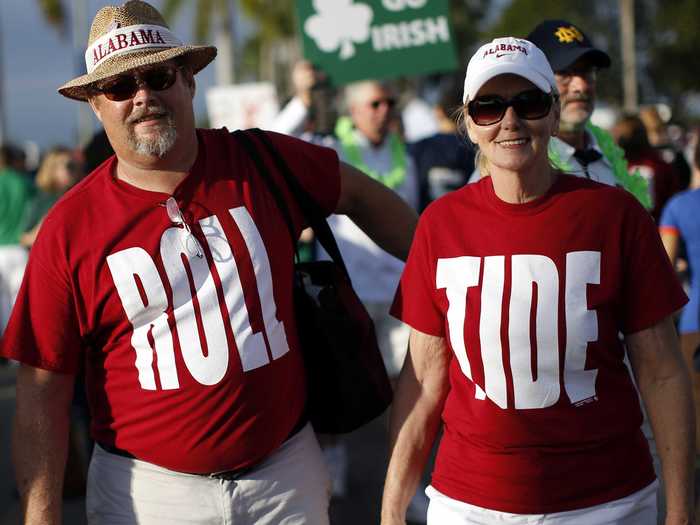
Alabama's economy includes a large manufacturing sector. Metal-and-wood-product manufacturing, paper manufacturing, and textiles employ a larger share of people in Alabama than in other states.
Alabama had a very low 2013 GDP per capita of $37,389, well below the average among the states of $48,183. Alabama's housing market was also weak, with prices increasing by only 1.64% year-over-year from Q3 2013 to Q3 2014.
45: West Virginia
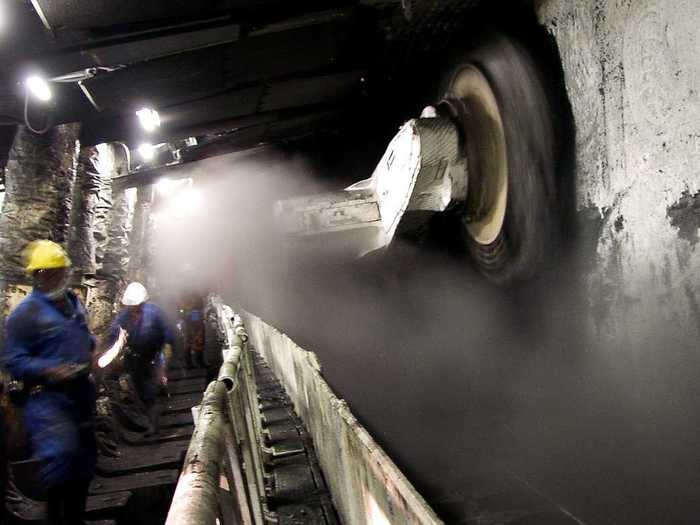
Mining is a big part of West Virginia's economy. Only Wyoming mines more coal than West Virginia. Mining and mining support activities also contribute more jobs in West Virginia than in other states.
West Virginia had the fourth-lowest 2013 GDP per capita, at $36,963. Wages in Q2 2014 were similarly weak, with an average weekly wage of $792, compared with an average of $879 among all states. One bright spot was the recovery of the state's housing market: Housing prices rose 5.08% between Q3 2013 and Q3 2014, well above the state average of 3.85%.
44: Vermont

Keurig Green Mountain coffee was founded in Vermont, and it still has its headquarters in the state. Vermont's charming New England scenery leads to the accommodation industry having an outsize footprint.
Vermont's housing market saw the third-lowest growth rate between Q3 2013 and Q3 2014, with just a 0.17% increase in housing prices. The state also had a 2013 government surplus of just $278 million, far smaller than the $4.2 billion average among the states. On the bright side, the December 2014 unemployment rate was a healthy 4.2%, much lower than the average state unemployment rate of 5.3%.
43: South Carolina

As with some of the other southern states on this ranking, South Carolina has an economy with an outsize manufacturing sector. Textiles, paper manufacturing, and electrical-equipment manufacturing all have a larger share of employment in South Carolina than in other states.
South Carolina had the third-lowest 2013 per-capita GDP among the states at just $36,059. Q2 2014 average weekly wages were low as well, at $765, compared with an average of $879 among the states. On a happier note, the state saw robust job growth, with nonfarm payrolls increasing 2.42% between December 2013 and December 2014, higher than the average increase of 1.78%.
42: Arkansas

Wal-Mart, the No. 1 company on the Fortune 500 list, has always had its headquarters in Bentonville. Arkansas is also home to Tyson Foods, and food manufacturing is a huge source of employment in the state.
Arkansas had the fifth-lowest weekly average wage among the states in Q2 2014, at just $745. State per-capita GDP in 2013 was also low, at $39,111. Housing prices have been slow to rise, increasing just 1.92% between Q3 2013 and Q4 2014.
41: Rhode Island

Rhode Island is home to the pharmacy giant CVS Caremark, which has its headquarters in Woonsocket. The state has had a rough time since the Great Recession.
While Rhode Island had the fifth-highest December 2014 unemployment rate of 6.8%, Q2 2014 average weekly wages were slightly above average at $898.
40: Idaho

Idaho is a disproportionately agricultural state, and it is well known for its huge production of potatoes. Production of both animals and crops disproportionately contributed to Idaho's employment.
Idaho had the lowest wages in Q2 2014 among the states, with the average worker earning only $697 per week. It also had the second-lowest 2013 GDP per capita, at just $35,375. Despite these woes, Idaho's December 2014 unemployment rate of 3.7% was much lower than the average rate of 5.3% among the states.
39: South Dakota

South Dakota has an active ranching industry, with animal production contributing a disproportionate share to the state's economy. Another outsize employer is the credit-intermediation industry.
South Dakota had the third-lowest average weekly wage in Q2 2014 among the states at $712. While the state's year-over-year job growth was slow, seeing only a 0.81% increase in nonfarm payroll jobs between December 2013 and December 2014, South Dakota had the third-lowest unemployment rate in the country, just 3.3%.
38: Louisiana

Louisiana is home to two Fortune 500 companies: the telecommunications giant CenturyLink and the energy company Entergy. The energy industry is a huge part of Louisiana's economy, with several industries associated with mining, refining, and oil transportation disproportionately accounting for employment in the state.
Louisiana's December 2014 unemployment rate was 6.7%, over a percentage point higher than the average rate of 5.3%. Louisiana was also one of only three states to run a government deficit in 2013: State expenses were almost $800 million more than revenues.
37: Indiana

Seven Fortune 500 companies have their headquarters in Indiana, including the health insurer WellPoint and the pharmaceutical heavyweight Eli Lilly. Indiana also has a robust manufacturing sector, led by the steel and auto industries.
While Indiana's Q2 2014 average weekly wage of $784 was substantially lower than the state average of $879, nonfarm payroll jobs grew by 1.97% between December 2013 and December 2014, slightly higher than the average growth rate of 1.78%.
36: Pennsylvania

Pennsylvania is home to 21 Fortune 500 companies. Among them are the cable company Comcast, the pharmacy chain Rite Aid, US Steel, and Hershey.
Pennsylvania's 2013 state government surplus of $378 million was far lower than the average of $4.2 billion. The state's housing market also recovered slower than average, with housing prices going up just 1.73% between Q3 2013 and Q3 2014, compared with the average state increase of 3.85%.
35: New Jersey
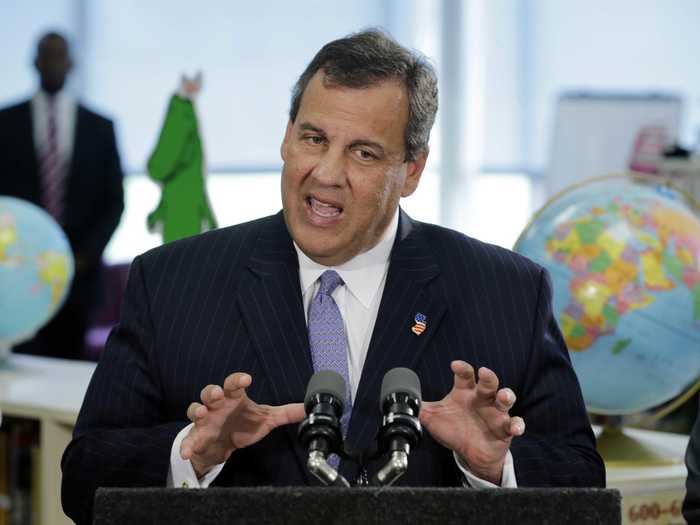
As in Pennsylvania, 21 Fortune 500 companies have their headquarters in New Jersey. Among them are the consumer staples giant Johnson & Johnson, the pharmaceutical makers Merck and Prudential Financial, and the industrial conglomerate Honeywell.
New Jersey saw very slow job creation, with a nonfarm payroll growth rate of just 0.74% between December 2013 and December 2014, far lower than the average change of 1.78%. On the positive side, New Jersey had the fourth-highest Q2 2014 average weekly wage at $1,097 and the eighth-highest 2013 GDP per capita of $57,203.
33 (tie): Montana

Mining and ranching are big employers in Montana, and the state's sweeping mountain vistas also lead to tourism-associated industries like accommodation and recreation having an outsize share of employment.
Montana's Q2 2014 average weekly wage was the third lowest in the country at $734. However, December 2014 unemployment was relatively low at 4.2%, and Montana's home prices had a strong 6.15% rise between Q3 2013 and Q3 2014.
33 (tie): Kansas

Ranching and aircraft manufacturing are responsible for a disproportionately large share of Kansas' employment.
Kansas' 2013 GDP per capita of $45,665 was just a few thousand dollars lower than the state average of $48,183. Similarly, Kansas' increase in housing prices from Q3 2013 to Q3 2014 of 3.18% was pretty close to the average of 3.85%. In addition to being tied with Montana in the overall ranking, Kansas also had the same low December 2014 unemployment rate of 4.2%.
32: Tennessee

Ten Fortune 500 companies have their headquarters in Tennessee. These include FedEx, the Hospital Corporation of America, International Paper, and Dollar General. Given the state's central geographic location and the presence of FedEx, many more Tennesseans work in the courier, truck-transportation, and water-transportation industries than Americans do overall.
Tennessee's housing market was recovering at a rate faster than the average, with housing prices rising 5.12% between Q3 2013 and Q3 2014. Job growth was also better than average, with a 2.39% gain in nonfarm payroll jobs between December 2013 and December 2014. That job growth, however, has not helped Tennessee's above-average unemployment rate of 6.6%.
31: Michigan

Twenty Fortune 500 companies have their headquarters in Michigan. In addition to the auto giants GM and Ford, Dow Chemical calls Michigan home. The auto industry, naturally, has a disproportionately huge presence in the state.
Michigan's 2013 state government surplus was a healthy $3.5 billion, and housing prices jumped 6.31% between Q3 2013 and Q3 2014. On the downside, the state's 2013 per-capita GDP of $41,252 was quite a bit lower than the average of $48,183.
30: Alaska

Owing to Alaska's massive oil reserves, mining, especially industries related to the extraction and transportation of oil and gas, is a big part of Alaska's economy. Fishing and food production also have an outsize share of employment.
Alaska had the highest 2013 GDP per capita, at a whopping $70,113. Wages were also high, with a Q2 2014 average weekly wage of $1,014. Alaska's job market, however, keeps the land of the midnight sun on the bottom half of the ranking: Alaska had the second-lowest growth rate of nonfarm payroll jobs between December 2013 and December 2014, adding jobs at just a 0.62% year-over-year rate. Alaska's December 2014 6.3% unemployment rate also was a percentage point higher than the average state unemployment rate of 5.3%.
27 (tie): Virginia

Given Virginia's proximity to Washington, D.C., it is not surprising that the government-sponsored mortgage giant Freddie Mac has its headquarters in the state, as do the defense giants General Dynamics and Northrop Grumman.
Virginia workers had solid earnings in Q2 2014, with a state average weekly wage of $976. However, the housing and jobs markets saw slow growth in the past couple of years: Housing prices rose only 0.92% between Q3 2013 and Q3 2014, and the state's growth rate in nonfarm payroll jobs was just 0.77% between December 2013 and December 2014.
27 (tie): Maryland

Maryland has a diversified service-oriented economy. The defense contractor Lockheed Martin, the hotel giant Marriott International, and the entertainment company Discovery Communications all have their headquarters in Maryland.
Maryland's rankings were pretty similar to Virginia's. Maryland had the sixth-highest average weekly wage in Q2 2014 at $1,020. The state also had the 10th-highest 2013 GDP per capita of $54,350. However, as in Virginia, housing price and jobs growth were slow: Housing prices increased 0.38% between Q3 2013 and Q3 2014, and the state added nonfarm payroll jobs at a 0.77% rate between December 2013 and December 2014.
27 (tie): Iowa

Iowa is a big agricultural and industrial state. Animal production, machinery manufacturing, and food manufacturing all have much higher rates of employment in Iowa than in other states.
Iowa had a low unemployment rate of 4.1% in December 2014, well below the average 5.3% rate among all states. This was counterbalanced by a low Q2 2014 average weekly wage of just $780 and middling scores on our other metrics.
25 (tie): Nebraska

Warren Buffett's Berkshire Hathaway famously has its headquarters in Omaha, but so do Union Pacific and the food giant ConAgra. Accordingly, animal production, food manufacturing, and truck transportation all have higher shares of employment in Nebraska than elsewhere in the US.
Nebraska had the second-lowest December 2014 unemployment rate at just 2.9%. However, the state had the seventh-lowest rate of job growth, with a 0.82% increase in nonfarm payrolls between December 2013 and December 2014. The state also came in seventh to last on wages, with the average Nebraska worker earning just $756 per week.
25 (tie): Missouri

Missouri has a diversified economy, and 10 Fortune 500 companies have their headquarters here. Among them are the pharmacy benefit management giant Express Scripts, the manufacturing company Emerson Electric, and the controversial agricultural technology firm Monsanto.
Missouri's state government had an above-average 2013 surplus of about $7 billion. The state scored in the middle of the road on our other measures: 2013 GDP per capita was $42,708, a few thousand dollars below the average of $48,183.
23 (tie): Delaware

Delaware has a widely known business-friendly corporate legal code, and so it is not overly surprising that credit intermediation and finance are big employers in the state.
Delaware had the sixth-highest 2013 GDP per capita, at $62,682, and the eighth-highest rate of job creation, with nonfarm payrolls growing at a 2.68% rate between December 2013 and December 2014. On the downside, the state's housing market stayed stagnant, with prices growing only 0.02% between Q3 2013 and Q3 2014. The state's government financial situation was also somewhat weak, with only a $260 million surplus in 2013.
23 (tie): Connecticut

Connecticut is home to several corporations that are household names, like General Electric, United Technologies, and Xerox. The state has a huge financial sector, with disproportionate employment in the insurance, securities, and investments industries.
Connecticut was the only state in the country to see housing prices fall: Prices dropped 1.27% between Q3 2013 and Q3 2014. On the bright side, the Q2 2014 average weekly wage of $1,155 was the second highest in the country, and the 2013 GDP per capita of $65,070 was the fourth highest.
22: New Hampshire

New Hampshire has a large manufacturing sector, with textile mills, computer and electronics manufacturing, and metal fabrication all having larger employment shares in the state than elsewhere.
New Hampshire had the seventh-lowest unemployment rate among the states, hitting 4.0% in December 2014. The state had middling scores on the other measures, such as its 2013 GDP per capita of $48,447, barely higher than the average state GDP/capita of $48,183.
21: Arizona

While Arizona has an increasingly diverse economy, mining still draws a disproportionately large share of employment in the state.
House prices in Arizona jumped 6.57% from Q3 2013 to Q3 2014, well above the average increase of 3.85% among all the states. Job growth was also strong, with nonfarm payrolls growing at a 2.48% rate between December 2013 and December 2014. Despite that growth, December 2014 unemployment stayed high, at 6.7%.
19 (tie): Oklahoma

Energy is huge in Oklahoma: Oklahomans are far likelier than other Americans to work in extraction of oil and gas, support activities for mining, and pipeline transportation. Four Fortune 500 companies have their headquarters in Oklahoma: Chesapeake Energy, ONEOK, Devon Energy, and the Williams Companies. All four are heavily involved in energy.
Oklahoma had middling-to-good scores on each of our metrics. Its December 2014 unemployment rate of 4.2% was the 11th lowest in the country. State GDP per capita was $42,670 in 2013, a few thousand dollars below the average of $48,183.
19 (tie): Nevada

Just as Oklahoma was all about oil, Nevada is all about tourism and gambling: Accommodation, sightseeing transportation, and gambling all have outsize shares of employment in the state. Nevada's history as a mining center continues, with non-oil mining also a disproportionately important source of employment in the state.
Nevada's housing market saw the biggest upswing among the states, with housing prices leaping 10.35% between Q3 2013 and Q4 2014. On the other hand, the state had the fifth-highest unemployment rate in the country, at 6.8% in December 2014.
18: Wisconsin

Wisconsin is home to 10 Fortune 500 companies, including Northwestern Mutual Life Insurance, the human resource giant Manpower, and Harley-Davidson.
Wisconsin's state government had a large $8.4 billion surplus in 2013, double the $4.2 billion average among the states. Average weekly wages in Q2 2014 were $816, slightly below the average of $879 for all states.
17: North Carolina

North Carolina is home to Bank of America, but like many southern states, it also has a lot of manufacturing. Textiles, furniture, electrical equipment, and chemical manufacturing all have a disproportionate share of employment in the state.
North Carolina showed the sixth-strongest job growth among the states, with nonfarm payrolls increasing by 2.79% between December 2013 and December 2014. The state's December unemployment rate of 5.5% was very close to the average state unemployment rate of 5.3%.
15 (tie): Illinois

Illinois boasts the headquarters of 33 Fortune 500 companies, including Boeing, Walgreen Co., State Farm, Caterpillar, and McDonald's.
Illinois had the ninth-highest average wage in Q2 2014 at $988 per week. However, job growth in the state was slow: The state saw 0.89% growth in nonfarm payroll jobs between December 2013 and December 2014, the ninth-lowest rate among the states.
15 (tie): Georgia

As with many other southern states, Georgia has a lot of manufacturing. The textile industry is more concentrated in Georgia than in many other states. With Atlanta having the busiest airport in the world, it is not surprising that the air transportation industry also has an outsize share of Georgia's employment.
Georgia's housing market saw a lot of recovery, with prices jumping 6.66% between Q3 2013 and Q4 2014. Job growth was also fairly solid, with nonfarm payrolls growing by 2.66% between December 2013 and December 2014. Despite these positive indicators, Georgia had the third-highest unemployment rate in December 2014, at 6.9%.
13 (tie): Utah

One Fortune 500 company has its headquarters in Utah: The Huntsman Corporation, a chemical-manufacturing firm founded by the father of unsuccessful 2012 Republican presidential candidate Jon Huntsman Jr.
Utah had the third-highest rate of job growth among the states: nonfarm payrolls increased by 3.86% between December 2013 and December 2014. Utah's December 2014 unemployment rate of 3.5% was the fourth lowest in the country. Wages were slightly lower than in other states, with a Q2 2014 average weekly wage of $796, a bit lower than the average of $879.
13 (tie): Ohio

Owing to the state's Rust Belt roots, Ohio's manufacturing sector is a big part of the state's economy. Metal, plastics, auto, and electrical-equipment manufacturing all have a larger share of employment in Ohio than elsewhere.
Ohio's state government had a 2013 surplus of $14 billion, the fourth highest in the country. The state's December 2014 4.8% unemployment rate was lower than the average rate of 5.3% among all states.
12: New York

Fifty-four Fortune 500 companies have their headquarters in New York State, the most of any state. Of those, 48 call New York City home. With New York City as one of the great financial centers of the world, New Yorkers are three times as likely to be employed in the financial industry as Americans overall.
New York had the third-highest wages among the states, with a Q2 2014 average weekly wage of $1,146. The state's GDP per capita of $62,420 was the seventh highest in the country. However, New York housing prices rose only 1.55% between Q3 2013 and Q3 2014, the seventh-lowest rate in our ranking.
11: Wyoming

Wyoming is all about mining. Mining, mining support activities, extraction of oil and gas, pipeline transportation, and manufacturing of petroleum and coal products all employ Wyomingans at a very disproportionate rate compared with the rest of the country.
Wyoming had the third-highest 2013 GDP per capita among the states at $67,858. The state's December 2014 4.2% unemployment rate was also well below average. However, Wyoming's Q2 2014 average weekly wage of $871 fell just below the state average of $879.
10: Massachusetts

Massachusetts is home to 12 Fortune 500 companies, including Liberty Mutual, Raytheon, and Staples. Boston has a large number of colleges and hospitals, so it is not too surprising that education services and hospitals are disproportionately large employers in the state.
Massachusetts had the highest wages in the country, with the Q2 2014 average weekly wage at $1,158. On the opposite end of the scale, Massachusetts was one of only three states to have a 2013 government deficit: Expenses outstripped revenues by a whopping $1.3 billion.
9: Hawaii

Tourism is a big part of the economy in Hawaii, which is blessed with some of the most beautiful locations on earth. Hawaiians were employed at a much higher rate in the sightseeing, water transportation, accommodation, and museum and park industries than Americans overall.
Hawaii had the second-biggest jump in housing among the states: Housing prices went up 8.14% between Q3 2013 and Q3 2014. The state's 4.0% December unemployment rate was tied for seventh lowest in the country.
8: Minnesota

Minnesota is a big corporate center, with 18 Fortune 500 companies having their headquarters in the state including Target, Best Buy, 3M, and General Mills.
Minnesota's 3.6% December 2014 unemployment rate was the fifth lowest among the states, and its 2013 GDP per capita of $53,340 was well above the average state GDP per capita of $48,183.
7: Florida

Florida's sunny climate and year-round high temperatures lend themselves nicely to agriculture and tourism. Farming, sightseeing, and amusement parks employ Floridians at a higher rate than Americans at large.
Florida's nonfarm payrolls grew by 3.00% between December 2013 and December 2014, the fifth-highest growth rate in the country. Florida's housing market recovery was also the fifth best among the states: Housing prices rose 7.85% between Q3 2013 and Q3 2014. Florida's state government also had a huge $15 billion surplus, the third highest in the country.
6: Washington

The tech giants Microsoft and Amazon, wholesale retailer Costco, and coffee megachain Starbucks all call Washington home.
Washington's year-over-year nonfarm payroll growth rate of 2.74%, 2013 GDP per capita of $54,654, and Q2 2014 average weekly wage of $990 all fell in the top 10 in our rankings.
5: Oregon

Oregon's lush forests are a part of the state's economy. Oregonians are disproportionately likely to be employed in the forestry and logging and wood-product manufacturing industries.
Oregon had the seventh-best housing-market improvement among the states, with prices rising 6.98% between Q3 2013 and Q3 2014. Nonfarm payroll jobs grew 3.01% between December 2013 and December 2014, the fourth-highest growth rate in the country. Despite that job growth, December 2014 unemployment was at 6.7%, the eighth-highest rate in our ranking.
4: California

Silicon Valley is a major part of California's economy. The state houses the headquarters of 53 Fortune 500 companies, including the tech heavyweights Apple, Hewlett-Packard, Google, Intel, Cisco, and Oracle, to name only a few. Of course, California's massive economy stretches far beyond San Francisco and Palo Alto: The state's gross domestic product is comparable with those of entire countries, including India, Canada, and Australia.
California had the fifth-highest wages in the country, with a Q2 2014 average weekly wage of $1,072. The state's housing prices went up 8.12% between Q3 2013 and Q3 2014, the third-biggest jump in the country. The state government's huge 2013 surplus of $32 billion was the largest of any state.
3: Colorado
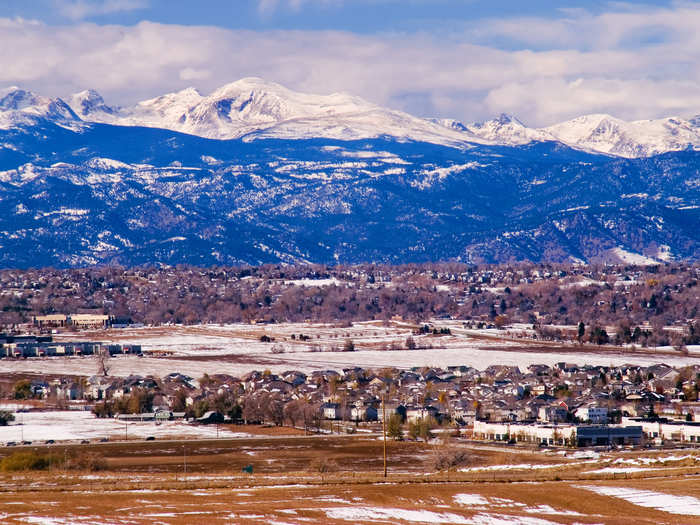
Colorado, like many western states, has a disproportionately large oil and mining sector. With Denver's central location between the densely populated coasts making the city a natural hub, air transportation and telecommunications also have an outsize share of Colorado's employment.
Colorado fared pretty well across the board. Its December 2014 unemployment rate of 4.0% was tied for seventh best in the country, and housing prices rose a healthy 6.96% between Q3 2013 and Q3 2014.
2: Texas
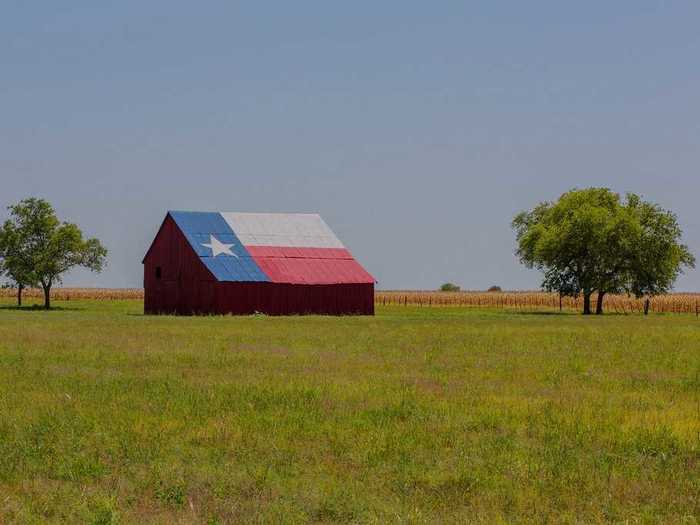
Energy is king in Texas. Texans are far likelier than most Americans to work in extraction of oil and gas, mining support activities, pipeline transportation, and petroleum refining.
Nonfarm payrolls grew by 4.04% between December 2013 and December 2014 in Texas, the second-highest rate in the country. Housing prices jumped 7.12% between Q3 2013 and Q3 2014, the sixth-biggest increase among the states.
1: North Dakota

The fracking boom in the Bakken shale has made North Dakota one of the most impressive economic stories of the past few years. Industries related to oil and gas are very overrepresented in North Dakota's employment picture, and on the shoulders of this boom, North Dakota has the strongest economy of all the states.
North Dakota's nonfarm payrolls grew by 5.42% between December 2013 and December 2014, the biggest jump among the states. The December 2014 unemployment rate of 2.8% was also the best in the country. North Dakota's 2013 GDP per capita was the second highest in our rankings at $68,804.
For a picture of the economy as a whole...
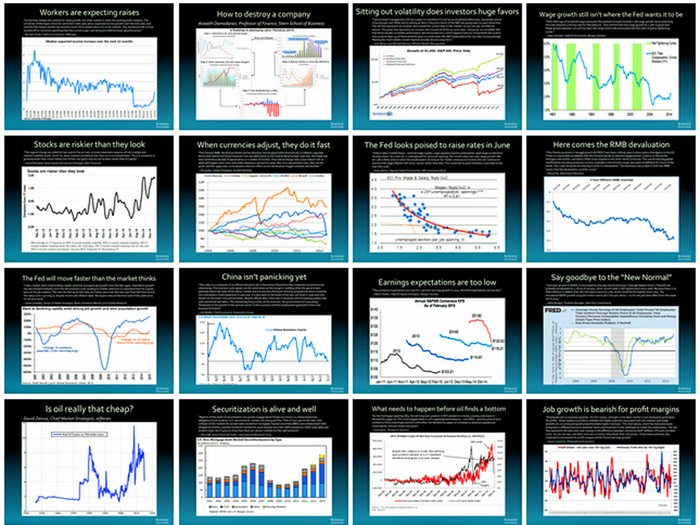
Popular Right Now
Popular Keywords
Advertisement